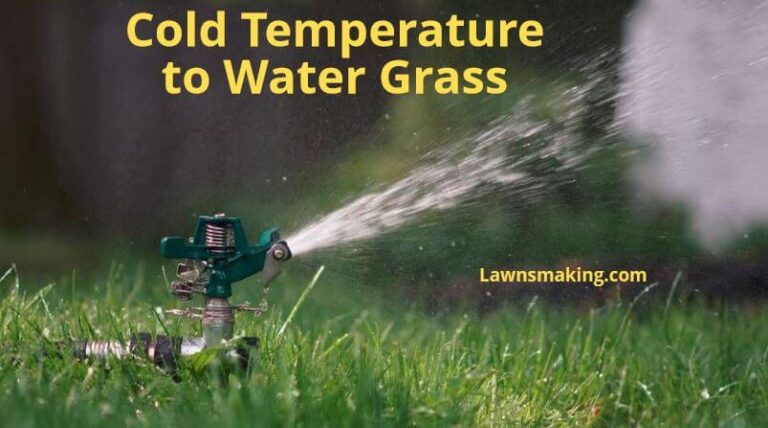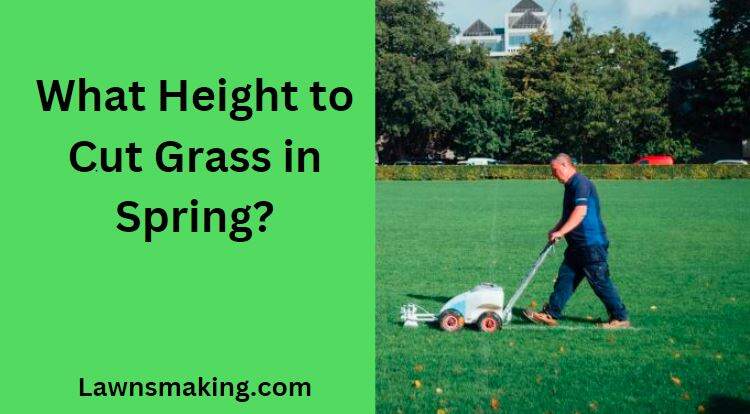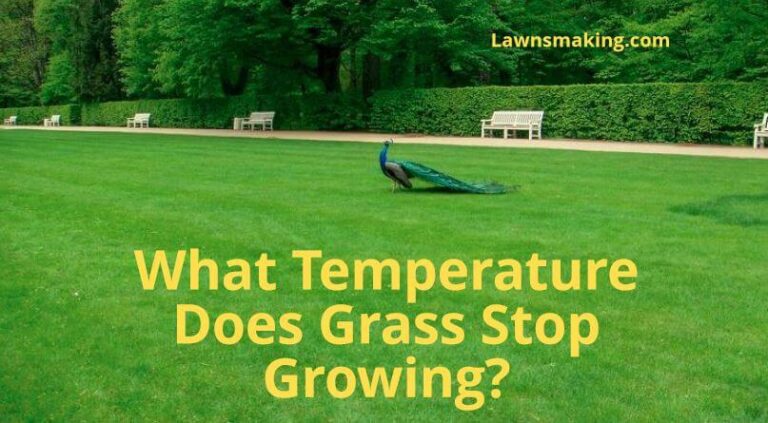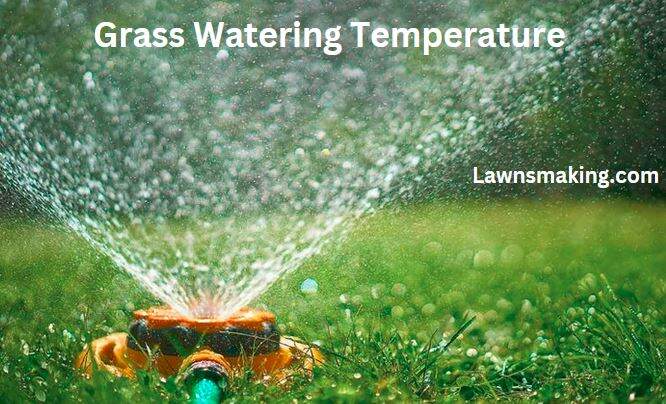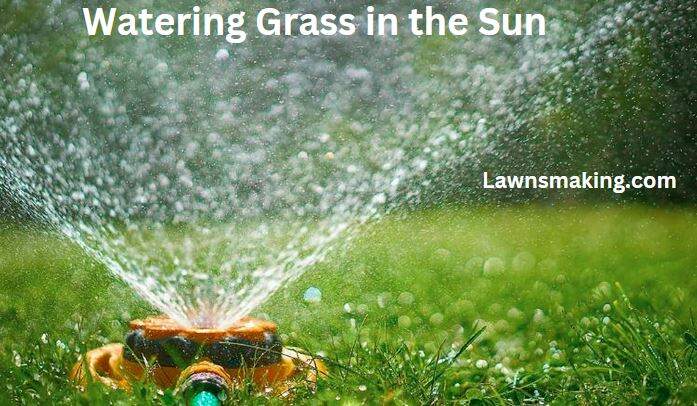
Perhaps you’ve noticed your lawn browning in summer despite watering it diligently and wondered, does watering grass in the sun burn it? Or you heard it mentioned somewhere and are curious to know the truth. Does the sun damage wet grass, or is it just a myth?
Watering grass in the sun does not burn it. Scientific evidence has sufficiently demonstrated that this notion is false. The only effect of this practice is that the plant will lose much of the water by evaporation before using it.
In this article, we shall unravel the fallacy that watering grass in the sun burns it. Keep reading to learn what you should and shouldn’t do when irrigating your lawn, especially during hot weather.
Debunking the Myth: Watering Grass in the Sun Burns It
Since immemorial, gardeners have held the deep-rooted belief that watering grass in the sun burns it.
The idea behind this theory is that water droplets on leaf blades behave like magnifying lenses. They concentrate sun rays onto the surface of the leaves, resulting in burnt patches.
Moreover, it’s widely believed that since water is a good conductor of heat, wet leaves are more prone to sunburn than dry ones.
You can agree that these explanations sound so sensible, especially with the patina of physics.
As such, generations of gardeners have faithfully followed the advice – never irrigate your lawn or plants in the sun’s full glare.
But, in reality, does watering grass in the sun burn it?
No, it doesn’t.
If it really does, why aren’t most plant leaves filled with scorched patches after every summer downpour, often followed by intense sunlight? Have you ever asked yourself that?
Let’s now look at the scientific evidence that discredits this belief.
Related: What Temperature Is Too Cold to Water Grass?
Scientific Research Debunks the Myth

Concerned by the absence of evidence, a team of scientists from Eötvös University in Budapest, Hungary, set out to conduct a series of experiments in 2010.
They used computer simulations alongside real leaves to test this claim.
First, they carefully put water droplets on the surfaces of ginkgo and maple leaves and left them in the sun.
After careful observation, they found that the water vaporized too quickly without evidence of leaf damage.
This led to the question: why can’t water droplets cause damage when they can behave like lenses and concentrate sun rays?
After some calculations, these researchers found that water droplets have a lower refractive index, making them less effective than glass lenses.
Also, they determined that the shape of water droplets mattered regarding light refraction.
Water disperses on a ‘wettable’ surface, such as a maple leaf, to form shallow droplets.
Computer simulations showed these shallow droplets could only focus light efficiently below the leaf surface. This is impossible in real life since leaves are not transparent. Practically, the drops can’t focus light anywhere.
Similarly, water formed more spherical droplets on a water-repellent surface, such as a ginkgo leaf. Like the first hypothetical case, these droplets could only focus light efficiently below the leaf’s surface.
The spherical droplets could also focus light from one side of the drop to the surface on the opposite side (assuming the surface is horizontal).
In reality, leaves are unlikely to stay stationary in a horizontal position. Such droplets would readily fall off leaves with the slightest breeze, lowering the likelihood of causing leaf scorch.
From this experiment, the researchers deduced that water droplets cannot cause sunburn on wettable or water-repellent leaf surfaces.
However, in another experiment, they established that water droplets can cause burnt patches. The only condition is the leaf should be heavily covered with hairs that can hold the droplets above its surface.
In this case, the droplets created spheres on the hairs. These spheres focused light on the leaf surface, causing sunburn.
The scientists demonstrated this using the hairy leaves of the floating Salvinia natans fern, kept still in a water container.
But, practically, such droplets on terrestrial leaves would be easily lost by evaporation or wind. Again, this makes sunburn nearly impossible.
Considering the unequivocally negative evidence, what then causes burns on grasses?
Find Out: What Temperature Is Too Cold to Fertilize Lawn Areas?
Possible Causes of Grass Burns
Experts explain that foliar burns are mainly caused by chemical reactions that occur when harmful substances find their way onto leaf surfaces. Such substances may include
- Excess fertilizer
- Water with excess chloride and sodium salts
- Acid rain
- Chlorinated water
- Pesticides
In such a case, scorch marks may be caused when these substances
- leave residues on the leaf surface
- dehydrate leaf patches by osmosis
Other causes of grass burn are
- Pests and diseases
- Overwatering which can cause the growth of fungi on leaves
- Underwatering which can lead to salt build-up in the soil
- Poor soil quality
Effects of Watering Grass in the Sun
Even if you no longer need to be concerned about sunburnt grasses, it’s still not the best idea to irrigate your lawn in the full heat of a sunny day unless it’s necessary.
The water on the soil surface will be lost by evaporation too quickly to be efficiently used by the plant roots.
But, if you observe moisture-stress signs, such as wilting and discoloration, at midday, by all means, water your lawn.
Postponing irrigation to a suitable time of the day can cause extreme heat damage, which can sometimes be irreversible.
Should You Water Grass at Night Instead?
Well, you might assume watering grass at night instead of in the daytime is more convenient, particularly when reducing overall water consumption.
Unfortunately, it is not. Watering grass at night comes with its risks, too.
At night, excess water doesn’t have a chance to escape into the atmosphere by evaporation and transpiration. This is because of the low temperatures and lack of sunlight.
As such, your lawn will remain damp overnight, creating a perfect breeding ground for fungi and other grass diseases.
The soil can also become waterlogged, blocking oxygen from reaching the grassroots. This can cause plant rot. You also risk eroding the soil.
Moreover, a wet lawn attracts mosquitoes, slugs, and other pests that can cause diseases. Its slippery nature can also be hazardous for people and pets.
The Best Time to Water Grass in Summer
The best time to water your lawn in summer is between 6 am and 10 am.
The minimal sunlight and wind will allow the grass plants to absorb water thoroughly, ensuring sufficient hydration throughout the day.
Also, watering during this window will allow the grass blades to dry as the sun goes up, lowering the chances of getting diseases.
If you fail to water your lawn early in the morning for whatever reasons, the next best time to achieve this is late afternoon when the sunlight and wind have subsided.
Besides not having to worry about excess evaporation, this duration also allows grass blades to dry before nightfall.
Final Words
The question – does watering grass in the sun burn it – has once crossed every lawn owner’s mind. And even though evidence disproves this fallacy, most people still keep this misinformation alive.
There are several causes of grass burns, but watering in the sun isn’t one of them.
Still, experts advise against it.
The optimal irrigation time is early morning or late in the afternoon. Conducting it in the blazing sun will only increase evaporation.
Lastly, avoid watering your lawn at night. By doing this, you’ll be setting a scene for disaster.
